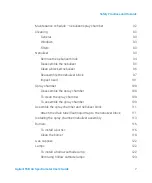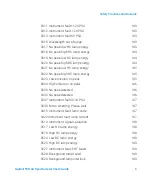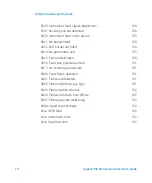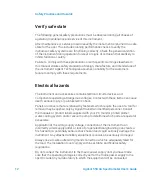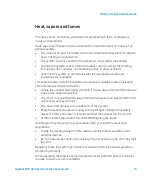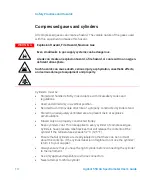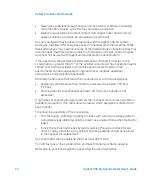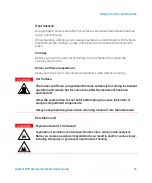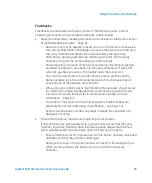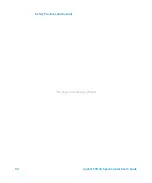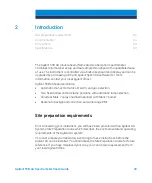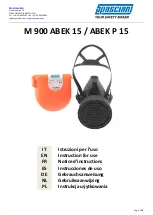
Safety Practices and Hazards
Agilent 55B AA Spectrometer User’s Guide
21
the documentation package that accompanies the product containing a copy
of the Declaration of Conformity. The Declaration of Conformity is the legal
declaration by Agilent that the product complies with the directives listed
above and shows the EN standards to which the product was tested to
demonstrate compliance.
Electromagnetic compatibility
EN55011/CISPR11
Group 1 ISM equipment:
group 1 contains all ISM equipment in which there is
intentionally generated and/or used conductively coupled radio- frequency energy
which is necessary for the internal functioning of the equipment itself.
Class A equipment
is equipment suitable for use in all establishments other than
domestic and those directly connected to a low voltage power supply network
which supplies buildings used for domestic purposes.
This device complies with the requirements of CISPR11, Group 1, Class A as
radiation professional equipment. Therefore, there may be potential difficulties in
ensuring electromagnetic compatibility in other environments, due to conducted
as well as radiated disturbances.
Operation is subject to the following two conditions:
1
This device may not cause harmful interference.
2
This device must accept any interference received, including interference that
may cause undesired operation.
If this equipment does cause harmful interference to radio or television reception,
which can be determined by turning the equipment off and on, the user is
encouraged to try one or more of the following measures:
1
Relocate the radio or antenna.
2
Move the device away from the radio or television.
3
Plug the device into a different electrical outlet, so that the device and the
radio or television are on separate electrical circuits.
4
Make sure that all peripheral devices are also certified.

